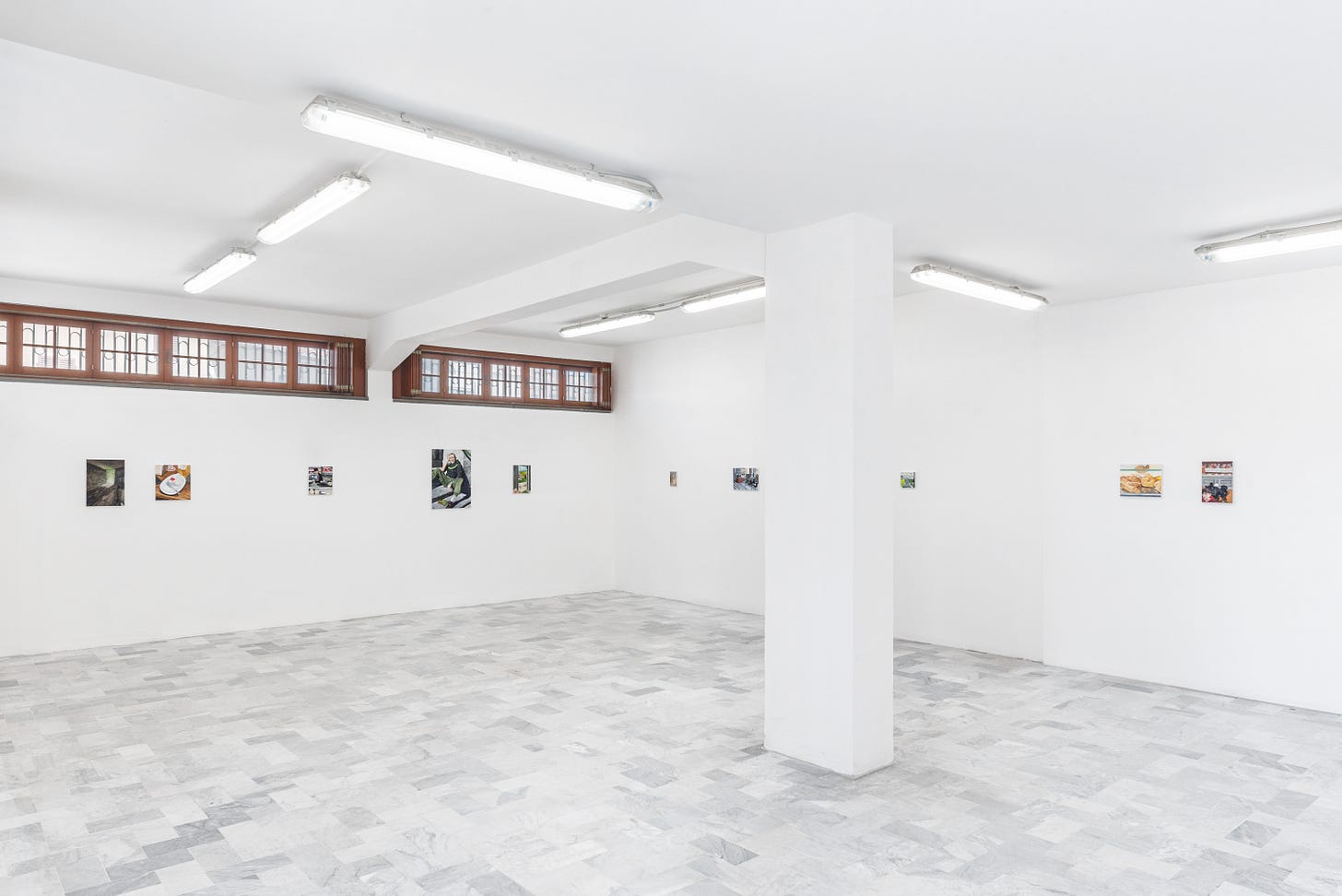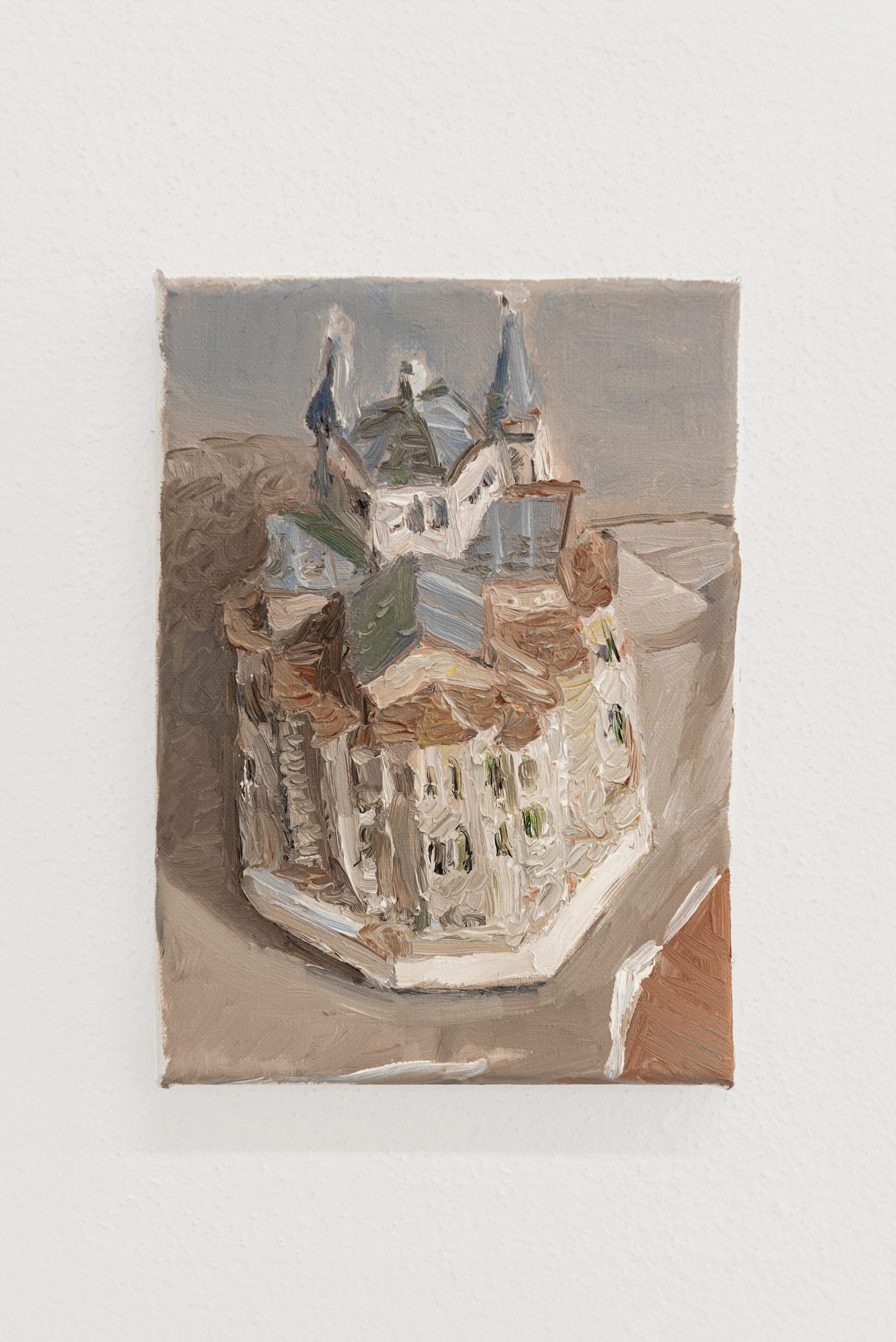#23 Sali Dispatch: Familiar Distance
In this week's column, Giovanni Copelli tells us the stories behind his painting between memory and reality
For this second issue, dedicated to young painters, the founders behind Ondo Spazio (Costanza Nizzi and Arianna Iandelli) interview Giovanni Copelli, who has just concluded a solo exhibition at their space in Pistoia. This ongoing column, created in collaboration with them, will feature artists selected and spotlighted together regularly. In upcoming editions, we’ll continue to explore the work of other rising stars, beginning with this interview with Copelli, following our special publication on his first solo show.
Interview by Arianna Iandelli and Costanza Nizzi
A&C: In the months leading up to the exhibition we worked on together, we witnessed several conversations you had with people interested in your practice, eager to learn more. Often, when asked what kind of artist you are, you would respond succinctly, ‘a realist painter,’ with a mix of relief—perhaps at having a ready answer—and amusement—possibly aware of the broad appeal of a certain kind of painting in the contemporary scene. So, how did you come to be interested in realist painting? And what is the urgency behind this way of seeing the world?
G: When I define my painting as a realist, I find that I am easily understood by anyone, which is a great advantage. I don’t particularly enjoy the question ‘What kind of painting do you do?’ because, for obvious reasons, it’s always simpler to look at the paintings directly—but so be it. To the historical cultural movement of Realism, I feel a precise debt; the work of painters from the 17th to the 19th century influenced me greatly, and I would say I intend to navigate the contemporary world in the same way of looking at things.
In the past, I created works that could be described as my own imaginative reinterpretations of an archive of artworks drawn from art history. This kind of research ended when I realized that by continuously reworking other paintings, I was avoiding the very power of painting that has always captivated me: its ability to give us an image of the world that, however distant, still feels present. As a result, I decided to return to painting from life, representing subjects from a photographic perspective.
Your work often reveals a deep and layered connection with the landscape of Emilia, particularly Reggio Emilia, where you were born and raised. Looking at your paintings, one naturally thinks of specific visual references rooted in Italian culture, especially from that region—such as Luigi Ghirri’s photography or Fellini’s films, which capture an image of the territory that is both real and dreamlike. Could you tell us how these visual imaginaries have influenced your gaze? And in what way has that landscape shaped your artistic practice?
I think this Emilian-Romagnol approach you mention is closely tied to the theme of memory. Ghirri and Fellini can indeed be associated because both take us back to atmospheres, sensations, and recollections. For me, the image is primarily a memory—a cast of a moment that, by being fixed in an image, becomes more distant and melancholic.
Most of the works in the Ondo exhibition were created specifically for the space over several months following multiple visits to Tuscany. What distinguishes this body of work? And how does it connect to the earlier series produced between Caserta and Naples?
Paesaggi Italiani (Italian Landscapes) took shape during a months-long stay in Campania starting in October 2023. The initial idea was to spend significant time in Naples to create a visual narrative of the city. Still, life circumstances forced me to leave earlier than expected, making me somewhat of a nomad. From this experience, the project evolved into a broader and more scattered documentation of places, atmospheres, and subjects from contemporary Italy.
The exhibition Paesaggi Italiani explores the meaning of traditional painting genres—portraiture, still life, and, of course, landscape—in their contemporary understanding. This is about updating the subject matter and a broader reflection on the painted image itself. How do objects like sandwiches, trinkets, provincial bars, archaeological sites, and church interiors offer new perspectives on representation in painting?
My choice of subjects is guided by a fascination with what surrounds me. Selecting one topic over another stems from various reasons. Still, at the core, I wanted to create images that, when taken together, would form a documentary narrative and convey an emotional atmosphere.
I chose to depict things from a perspective I like to call humble, at the base level, so I gave so much space to food and everyday gestures, especially the less celebrated ones. These moments are no less beautiful or significant than grander, more traditional subjects. Rather than seeking new forms of representation, I turned to classical ones, particularly 17th-century Dutch painting, where the subjects are often everyday moments—almost banal, one might say, compared to the grand themes tackled by much of Italian painting from the same period.
In contemporary life, I’m particularly drawn to what I don’t understand, to what repels me. I recently finished a miniature painting depicting Parthenon souvenirs—cheap plastic reproductions of what we tend to regard as the very symbol of classical culture. So why pay attention to them? Perhaps that’s precisely the point. I see painting as a way to understand, and perhaps even redeem, something that feels incomprehensible to me.
We’ve come to understand your creative process: there’s a moment when something suddenly captures your attention, and you feel the need to frame it with your phone’s camera. From there, the transition to canvas often begins, where those images become ‘stolen’ stories, returned in a new form. In this process, how much has exposure to social media influenced the way you look at the world and the way you choose what to depict?
I’m not sure social media has directly influenced my way of seeing the world. If anything, I actively try to develop my own way of seeing that has little to do with the internet. I use my phone’s camera primarily to obtain reference images for painting—I never actually share them.
Your artistic interest extends beyond painting: drawing, printmaking, and even tattooing are part of your visual and experimental universe. How do these practices interact with your research? Do they influence each other, or do you see them as separate territories with their own rules and logic?
I don’t see drawing as an alternative or parallel practice to painting—it serves my painting.
As for any material I produce that doesn’t necessarily fit within an oil painting, I see it all as fuel for the fire. I keep the boundaries open because everything can serve as a form of study or a tool for focusing on an issue. That said, oil paintings remain the core of my work—nothing interests me more than painting.
Your recent move to Athens marks a new chapter, not just in your personal life but perhaps in your artistic research as well. What led you to this decision, and how do you imagine this change of context will influence your work?
For years, I’ve found myself drawn to the south of Europe. First, I was in Provence, then in Campania, and now in Greece. I was born in northern Italy, in the Emilian countryside—a culture that feels quite cool and distant from the warmth of the Mediterranean. As a child, even Bologna felt like a kind of Rome to me, and the South was always a place I first pursued in my imagination. A crate of Sicilian oranges, a maritime pine, or a postcard was enough to transport me to places I only saw for the first time when I was already an adult. Needless to say, actually being in the South—immersed in its light and colors—felt like finding a sense of belonging to something I had always felt close to.
I first visited Athens only a few months ago, but I immediately knew it was an inevitable stop in my journey of discovery. Here, I’m finding direct connections to everything that fascinates me most in the world. You could say I feel guided by the things themselves. I have many ideas in mind, but I’d rather not talk about them too much for now—I hope the paintings will speak for me.







